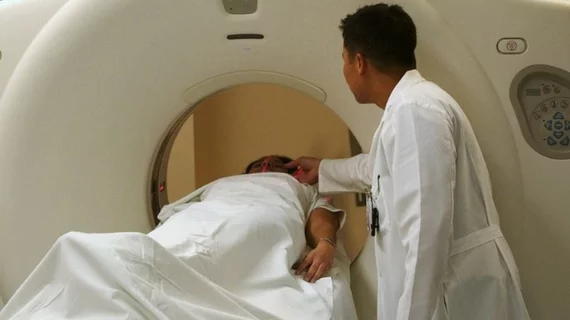Delayed-phase contrast-CT scans can help detect early pancreatic cancers, study shows
A study published in the October issue of the American Journal of Roentgenology reports that the addition of delayed-phase images during dual-phase contrast-enhanced CT exams could better detect small pancreatic ductal adenocarcinoma (PDAC) in its early stages.
Typically, patients with suspected pancreatic tumors undergo a dual phase contrast-enhanced CT scan, but PDAC masses may not be directly visible during these phases, making pathology potentially difficult to detect. This retrospective study sought to incorporate and examine what benefits might come from including a third, delayed phase of scans.
In total, 571 patients underwent both dual-phase (pancreatic and portal venous) and triple-phase (pancreatic, portal venous and delayed) scans for suspected pancreatic tumors between January 2017 and March 2020. Ninety-seven patients were confirmed to have small PDAC. There were 20 control patients with no suspected pathology on initial or follow-up scans up to 12 months later. Three radiologists interpreted both scans, with two more assessing visual attenuation on each phase.
Each radiologist noted increased AUC and sensitivity on the triple-phase scans compared to the dual-phase. Seventeen tumors showed pancreatic phase visual isoattenuation, and 16 of those were completely undetectable by all observers in the dual-phase scan. Of those 16, six were spotted by two observers, and five noted by at least one observer.
“Triple phase images yielded significantly higher diagnostic accuracy and sensitivity than dual-phase images.” Lauren F. Alexander, MD, at Mayo Clinic Florida, Jacksonville, Florida wrote. “The detection of small PDAC increases the chances of curative surgery. Therefore, the addition of delayed-phase imaging may ultimately improve the prognosis of patients diagnosed with PDAC.”
Given pancreatic cancer is aggressive and challenging to treat, early detection is key to a positive prognosis. The addition of this delayed-phase to pancreatic and portal venous phase CT scans could reveal small PDAC in its early stages, thus increasing chances of successful treatment and survival rates.
You can read the full study here.

